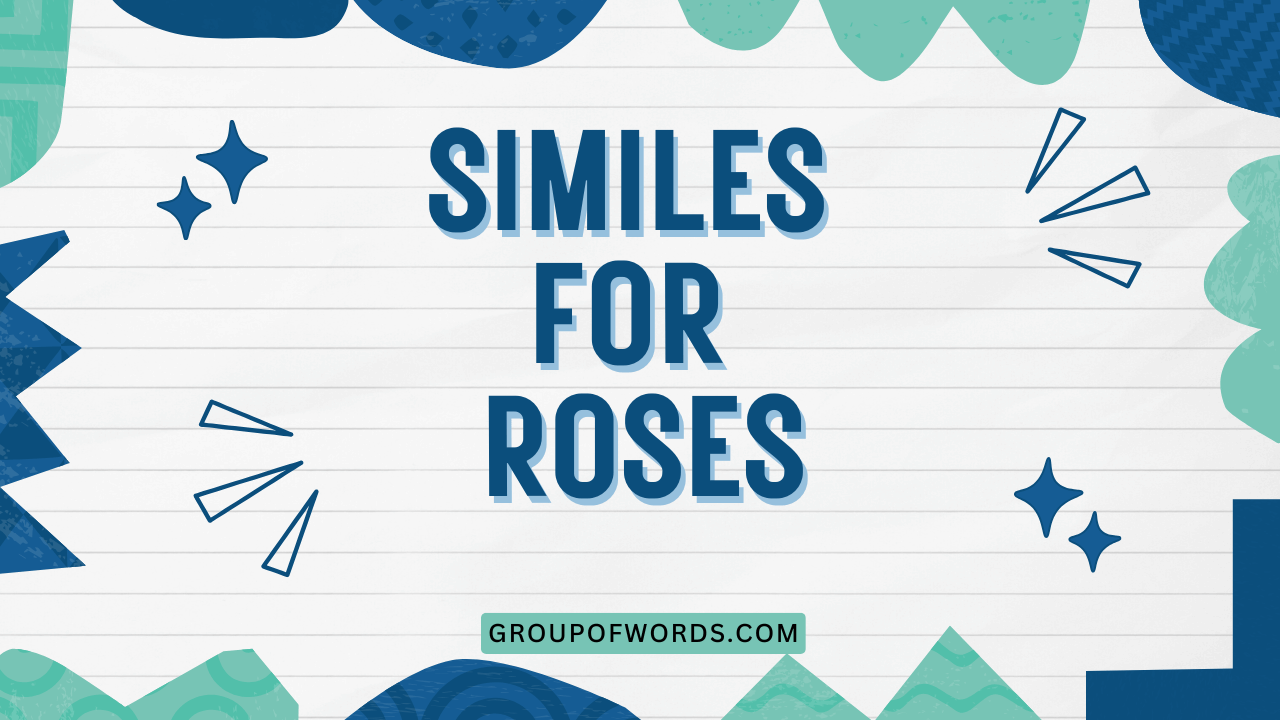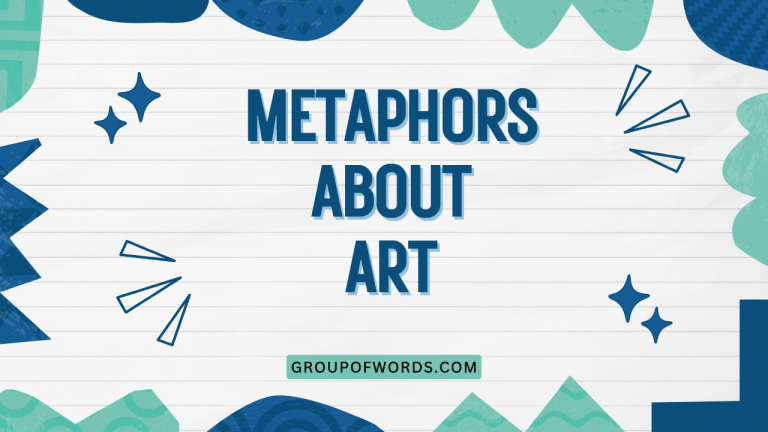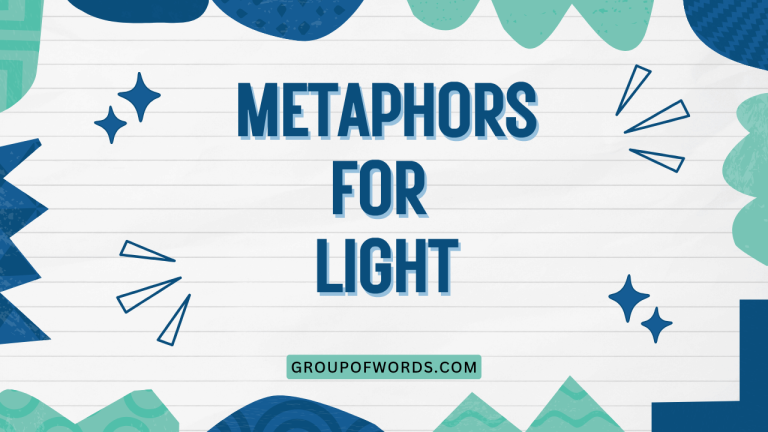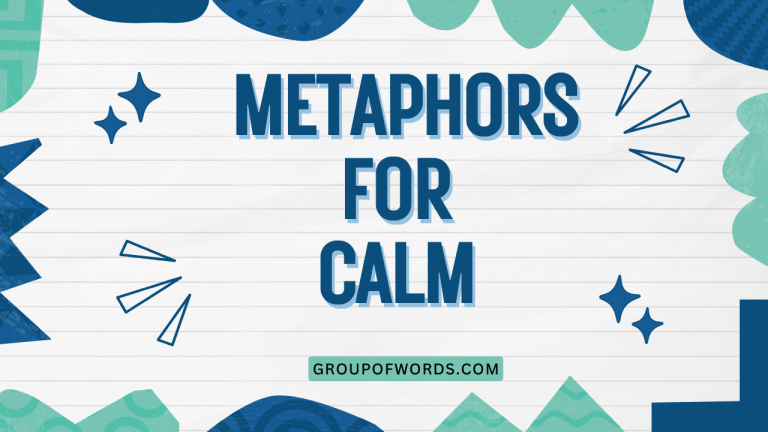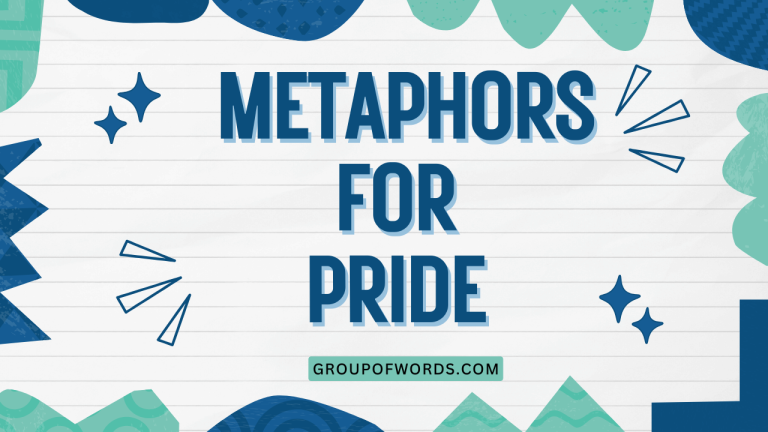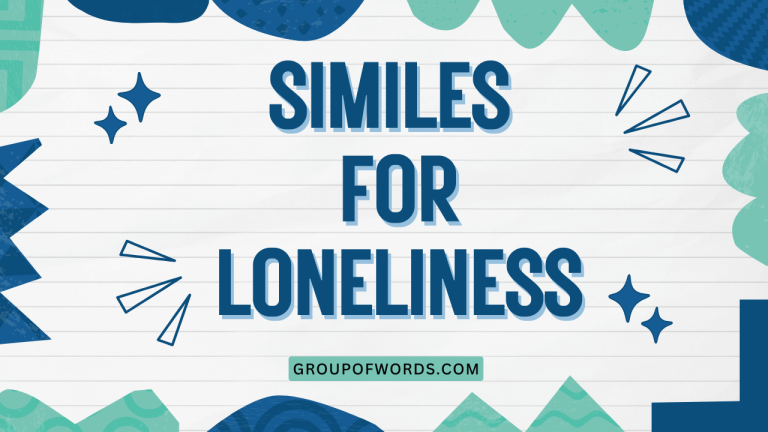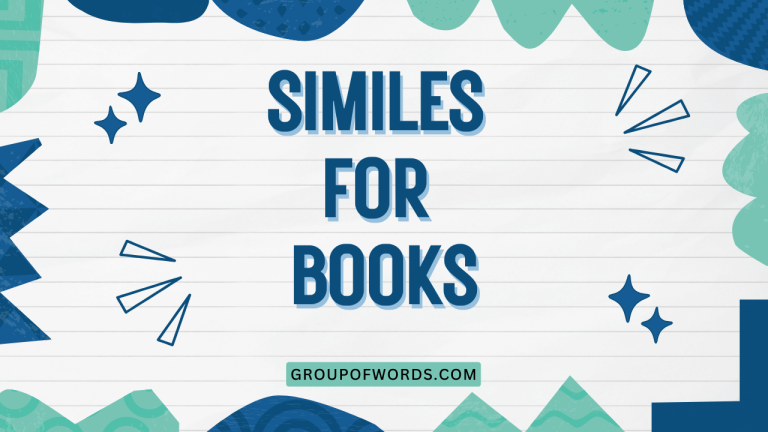Similes for Roses: Enhancing Your Descriptive Language
Roses, with their timeless beauty and captivating fragrance, have long been a source of inspiration for writers and poets. Understanding how to use similes effectively to describe roses can significantly enhance your descriptive language and bring your writing to life.
This article provides a comprehensive guide to using similes for roses, covering definitions, examples, usage rules, common mistakes, and practice exercises. Whether you’re a student, writer, or simply someone who appreciates the English language, this guide will equip you with the tools to craft vivid and engaging descriptions of roses.
Table of Contents
- Introduction
- Definition of Simile
- Structural Breakdown of Similes
- Types of Similes
- Examples of Similes for Roses
- Usage Rules for Similes
- Common Mistakes When Using Similes
- Practice Exercises
- Advanced Topics in Similes
- Frequently Asked Questions
- Conclusion
Definition of Simile
A simile is a figure of speech that directly compares two unlike things using the words “like” or “as.” The purpose of a simile is to create a vivid and imaginative comparison that enhances the reader’s understanding and appreciation of the subject. Similes are an essential tool in descriptive writing, allowing authors to convey complex ideas and emotions in a relatable and engaging manner. They help paint a picture in the reader’s mind, making the writing more memorable and impactful.
In essence, a simile functions as a bridge, connecting something familiar to something less familiar, thereby illuminating the latter. This comparison makes abstract concepts more concrete and sensory experiences more vivid.
Similes are found in poetry, prose, and everyday conversation, demonstrating their versatility and widespread use in the English language.
Structural Breakdown of Similes
The basic structure of a simile consists of three main components: the subject being described, the comparing word (“like” or “as”), and the object to which the subject is being compared. Understanding this structure is crucial for creating effective and accurate similes.
The formula can be represented as: Subject + Comparing Word + Object of Comparison. For example, in the simile “The rose is as red as blood,” the subject is “the rose,” the comparing word is “as,” and the object of comparison is “blood.” This simple structure allows for endless possibilities in descriptive writing.
The effectiveness of a simile depends on the relevance and impact of the comparison. The object of comparison should share a common characteristic with the subject, but it should also be distinct enough to create a meaningful and insightful comparison.
The stronger and more unexpected the connection, the more effective the simile will be.
Types of Similes
While all similes follow the same basic structure, they can be categorized based on the type of comparison they make. Here are a few common types of similes:
Descriptive Similes
These similes focus on describing a specific attribute or quality of the subject. They often use sensory details to create a vivid image in the reader’s mind.
For example, “The rose is as soft as velvet” is a descriptive simile that focuses on the texture of the rose.
Explanatory Similes
These similes aim to explain or clarify something about the subject by comparing it to something more familiar or understandable. For example, “The rose’s thorns are like a natural defense mechanism” explains the function of the thorns.
Emotive Similes
These similes evoke a particular emotion or feeling in the reader by associating the subject with something that carries a strong emotional connotation. For example, “The rose’s beauty is like a fleeting dream” evokes a sense of fragility and transience.
Examples of Similes for Roses
Here are numerous examples of similes used to describe roses, categorized by the aspect of the rose they focus on. These examples aim to provide a broad range of options and inspire creativity in your own writing.
Similes Describing Color
Roses come in a wide variety of colors, each with its own unique appeal. Similes can be used to effectively capture the nuances of these colors.
The table below presents examples of color similes for roses, offering a variety of comparisons to enhance your descriptive writing.
| Simile | Explanation |
|---|---|
| The rose is as red as blood. | Emphasizes the deep, intense red color. |
| The rose is as white as snow. | Highlights the pure, pristine white color. |
| The rose is as pink as bubblegum. | Describes a light, playful pink color. |
| The rose is as yellow as the sun. | Captures the bright, cheerful yellow color. |
| The rose is as orange as a sunset. | Evokes the warm, vibrant orange color. |
| The rose is as crimson as a cardinal’s feathers. | Describes a rich, deep red. |
| The rose is as lavender as twilight. | Highlights a soft, muted purple. |
| The rose is like a ruby in the green garden. | Compares the rose to a precious gemstone. |
| The rose is as golden as a field of wheat. | Describes a warm, rich yellow color. |
| The rose is as scarlet as a poppy. | Emphasizes a bright, vibrant red. |
| The rose is as ivory as ancient keys. | Highlights a creamy, off-white color. |
| The rose is as peach as a summer sky. | Describes a soft, delicate orange-pink hue. |
| The rose is like a flame in the darkness. | Emphasizes a vibrant red or orange. |
| The rose is as silver as moonlight. | Describes a pale, shimmering color. |
| The rose is as deep purple as amethyst. | Highlights a rich, regal purple. |
| The rose is as coral as the ocean floor. | Describes a vibrant pink-orange color. |
| The rose is as bronze as an ancient statue. | Captures a metallic brown-red hue. |
| The rose is like a jewel in the garden. | Compares the rose to a precious gemstone due to its color. |
| The rose is as burgundy as fine wine. | Emphasizes a deep, rich red-purple color. |
| The rose is as rose gold as a trending watch. | Highlights a trendy, shimmering pink-gold hue. |
| The rose is as alabaster as a marble statue. | Describes a smooth, translucent white color. |
| The rose is as saffron as exotic spices. | Captures a bright, golden-yellow hue. |
| The rose is like a blush on a summer bride. | Emphasizes a soft, delicate pink. |
| The rose is as cerise as ripe cherries. | Highlights a vibrant, deep red color. |
| The rose is as teal as the deep sea. | Describes a rare, exotic color for a rose. |
| The rose is as chartreuse as a rare stone. | Emphasizes an unusual, vibrant green-yellow. |
| The rose is like a painted masterpiece. | Compares the rose to art due to its unique color blend. |
| The rose is as umber as rich soil. | Highlights a deep, earthy brown. |
| The rose is as vermilion as a fire truck. | Describes a bright, intense red color. |
Similes Describing Texture
The texture of a rose can range from velvety soft to delicately fragile. Similes can be used to convey these tactile qualities.
The table below illustrates texture similes for roses, providing comparisons that emphasize the varying tactile sensations associated with roses.
| Simile | Explanation |
|---|---|
| The rose is as soft as velvet. | Emphasizes the smooth, luxurious texture. |
| The rose is as delicate as silk. | Highlights the fragile, refined texture. |
| The rose petals are like fine porcelain. | Compares the petals to a smooth, delicate material. |
| The rose is as smooth as polished stone. | Describes a sleek, refined texture. |
| The rose is as rough as sandpaper. (Referring to the stem) | Highlights the contrast between the petals and the stem. |
| The rose petals feel like the wings of a butterfly. | Emphasizes the light, delicate texture. |
| The rose is as fragile as a newborn’s skin. | Highlights the delicate, easily damaged texture. |
| The rose is like a cloud in your hand. | Compares the texture to something light and airy. |
| The rose is as tender as a lover’s touch. | Emphasizes the gentle, soft texture. |
| The rose is as crisp as new linen. | Describes a fresh, clean texture. |
| The rose is as velvety as a plush toy. | Highlights the smooth, luxurious feel. |
| The rose petals are like whispers against your skin. | Emphasizes the light, delicate touch. |
| The rose is as smooth as glass. | Describes a sleek, refined texture. |
| The rose is as firm as a ripe fruit. | Highlights a solid, yet yielding texture. |
| The rose is as supple as leather. | Describes a flexible, smooth texture. |
| The rose petals are like a downy blanket. | Emphasizes the soft, comforting texture. |
| The rose is as delicate as spun sugar. | Highlights the fragile, refined texture. |
| The rose is like a caress on your cheek. | Compares the texture to a gentle touch. |
| The rose is as plush as a Persian rug. | Emphasizes the luxurious, soft texture. |
| The rose petals are like feathers in the breeze. | Highlights the light, airy texture. |
| The rose is as yielding as soft clay. | Describes a malleable, gentle texture. |
| The rose is as refined as a silk scarf. | Emphasizes the smooth, elegant texture. |
| The rose petals feel like a gentle rain. | Highlights the soft, delicate touch. |
| The rose is as sensitive as a heartbeat. | Describes a delicate, responsive texture. |
| The rose is as polished as a gemstone. | Emphasizes the smooth, refined texture. |
| The rose petals are like a lover’s sigh. | Highlights the soft, gentle feel. |
| The rose is as sleek as satin. | Describes a smooth, lustrous texture. |
| The rose is as tender as a mother’s embrace. | Emphasizes the gentle, comforting texture. |
| The rose petals are like the first snow of winter. | Highlights the delicate, pure texture. |
Similes Describing Fragrance
The fragrance of a rose is one of its most captivating qualities. Similes can be used to evoke the scent in a reader’s mind.
The table below presents examples of fragrance similes for roses, offering comparisons that emphasize the delightful scents associated with roses.
| Simile | Explanation |
|---|---|
| The rose smells as sweet as honey. | Highlights the pleasant, sugary fragrance. |
| The rose smells like a summer garden. | Evokes a fresh, floral scent. |
| The rose’s fragrance is like a gentle perfume. | Compares the scent to a refined, pleasant aroma. |
| The rose smells as intoxicating as a fine wine. | Emphasizes the captivating, alluring fragrance. |
| The rose smells as refreshing as a spring breeze. | Highlights the clean, invigorating scent. |
| The rose’s scent is like a whispered secret. | Emphasizes the subtle, delicate fragrance. |
| The rose smells as delightful as a bakery. | Highlights the warm, inviting fragrance. |
| The rose smells like a field of wildflowers. | Evokes a natural, diverse scent. |
| The rose smells as comforting as vanilla. | Highlights the familiar, soothing fragrance. |
| The rose’s fragrance is like a sweet dream. | Emphasizes the pleasant, ethereal scent. |
| The rose smells as enchanting as a fairy tale. | Highlights the magical, captivating fragrance. |
| The rose smells like a bouquet of lilies. | Evokes a strong, floral scent. |
| The rose’s scent is like a warm embrace. | Emphasizes the comforting, inviting fragrance. |
| The rose smells as alluring as a siren’s call. | Highlights the captivating, irresistible fragrance. |
| The rose smells as delicate as a baby’s breath. | Emphasizes the soft, gentle fragrance. |
| The rose’s scent is like a cherished memory. | Emphasizes the nostalgic, pleasant fragrance. |
| The rose smells as sweet as spun sugar. | Highlights the sugary, delightful fragrance. |
| The rose smells like a symphony of flowers. | Evokes a rich, complex scent. |
| The rose’s fragrance is like a gift from nature. | Emphasizes the pure, natural fragrance. |
| The rose smells as captivating as a love song. | Highlights the romantic, alluring fragrance. |
| The rose smells as serene as a mountain breeze. | Highlights the calm, refreshing fragrance. |
| The rose smells like a secret garden. | Evokes a hidden, enchanting scent. |
| The rose’s fragrance is like a lover’s promise. | Emphasizes the intimate, sweet scent. |
| The rose smells as opulent as a royal garden. | Highlights the rich, luxurious fragrance. |
| The rose smells as inviting as a warm hearth. | Emphasizes the comforting, welcoming fragrance. |
| The rose smells like a summer meadow. | Evokes a natural, fresh scent. |
| The rose’s fragrance is like a gentle whisper. | Emphasizes the subtle, delicate scent. |
| The rose smells as heavenly as angel’s breath. | Highlights the divine, ethereal fragrance. |
| The rose smells as refreshing as a sea breeze. | Emphasizes the invigorating, clean fragrance. |
| The rose’s fragrance is like a sweet serenade. | Highlights the melodious, pleasant scent. |
Similes Describing Shape
The shape of a rose, from its tightly closed bud to its fully opened bloom, can be described using similes.
The table below presents examples of shape similes for roses, offering comparisons that emphasize the unique forms and structures associated with roses.
| Simile | Explanation |
|---|---|
| The rosebud is like a tightly closed fist. | Emphasizes the compact, closed shape. |
| The open rose is like a dancer’s twirling skirt. | Highlights the expansive, graceful shape. |
| The rose petals are like overlapping scales. | Describes the layered, textured shape. |
| The rose is like a heart, unfolding its secrets. | Emphasizes the emotional, symbolic shape. |
| The rosebud is as round as a pearl. | Highlights the smooth, spherical shape. |
| The rose is like a crown, fit for a queen. | Emphasizes the regal, elegant shape. |
| The rose petals curl like waves on the shore. | Describes the flowing, dynamic shape. |
| The rose is like a spiral staircase to heaven. | Emphasizes the intricate, ascending shape. |
| The rosebud is as pointed as a tiny flame. | Highlights the sharp, upward shape. |
| The rose is like a mandala, perfectly balanced. | Emphasizes the symmetrical, harmonious shape. |
| The rose petals are like feathers, softly layered. | Describes the light, airy shape. |
| The rose is like a chalice, holding nature’s nectar. | Emphasizes the cup-like, receptive shape. |
| The rosebud is as compact as a tightly held promise. | Highlights the small, contained shape. |
| The open rose is like a sunburst, radiating beauty. | Emphasizes the expansive, radiant shape. |
| The rose petals fan out like peacock feathers. | Describes the elaborate, showy shape. |
| The rose is like a kaleidoscope, ever-changing. | Emphasizes the complex, dynamic shape. |
| The rosebud is as small as a child’s closed hand. | Highlights the delicate, miniature shape. |
| The rose is like a labyrinth, full of hidden depths. | Emphasizes the intricate, mysterious shape. |
| The rose petals unfold like pages of a love letter. | Describes the gradual, revealing shape. |
| The rose is like a blossoming star, shining bright. | Emphasizes the radiant, celestial shape. |
| The rosebud is as tight as a guarded secret. | Highlights the concealed, protected shape. |
| The open rose is like an inviting embrace. | Emphasizes the welcoming, open shape. |
| The rose petals swirl like dancers on a stage. | Describes the graceful, dynamic shape. |
| The rose is like a treasure chest, full of beauty. | Emphasizes the valuable, abundant shape. |
| The rosebud is as petite as a sleeping babe’s fist. | Highlights the small, precious shape. |
| The open rose is like a blooming planet. | Emphasizes the expansive, cosmic shape. |
| The rose petals curve like ocean waves. | Describes the flowing, undulating shape. |
| The rose is like a blooming heart, filled with love. | Emphasizes the emotional, affectionate shape. |
| The rosebud is as tiny as a hummingbird’s egg. | Highlights the minute, delicate shape. |
Similes Describing Overall Impression
Sometimes, it’s useful to capture the overall impression of a rose using similes that encompass multiple aspects.
The table below presents examples of similes that describe the overall impression of roses, offering comparisons that emphasize the complete sensory and emotional experience associated with roses.
| Simile | Explanation |
|---|---|
| The rose is like a symbol of love. | Emphasizes the romantic, symbolic association. |
| The rose is as beautiful as a work of art. | Highlights the aesthetic, refined quality. |
| The rose is like a fleeting moment of perfection. | Emphasizes the ephemeral, precious nature. |
| The rose is as captivating as a fairy tale. | Highlights the enchanting, magical quality. |
| The rose is like a reminder of nature’s beauty. | Emphasizes the natural, awe-inspiring aspect. |
| The rose is as elegant as a queen’s gown. | Highlights the regal, sophisticated quality. |
| The rose is like a whispered promise of hope. | Emphasizes the optimistic, comforting aspect. |
| The rose is as vibrant as a summer’s day. | Highlights the lively, energetic quality. |
| The rose is like a treasure to be cherished. | Emphasizes the valuable, precious nature. |
| The rose is as timeless as a classic poem. | Highlights the enduring, timeless quality. |
| The rose is like a sweet memory, forever preserved. | Emphasizes the nostalgic, pleasant aspect. |
| The rose is as graceful as a ballet dancer. | Highlights the elegant, fluid quality. |
| The rose is like a secret whispered in the garden. | Emphasizes the mysterious, intimate aspect. |
| The rose is as radiant as a sunrise. | Highlights the bright, hopeful quality. |
| The rose is like a symbol of enduring love. | Emphasizes the romantic, steadfast association. |
| The rose is as precious as a rare jewel. | Highlights the valuable, exquisite quality. |
| The rose is like a dream come true. | Emphasizes the ideal, perfect nature. |
| The rose is as captivating as a star-filled night. | Highlights the enchanting, mesmerizing quality. |
| The rose is like a beacon of beauty in the world. | Emphasizes the prominent, inspiring aspect. |
| The rose is as delicate as a snowflake. | Highlights the fragile, exquisite quality. |
| The rose is like a gentle reminder of life’s beauty. | Emphasizes the comforting, uplifting aspect. |
| The rose is as cherished as a family heirloom. | Highlights the valuable, sentimental quality. |
| The rose is like a vibrant melody in a silent garden. | Emphasizes the lively, harmonious aspect. |
| The rose is as welcoming as an open heart. | Highlights the inviting, affectionate quality. |
| The rose is like a page torn from a fairy tale. | Emphasizes the enchanting, whimsical nature. |
| The rose is as sublime as a masterpiece painting. | Highlights the exceptional, artistic quality. |
| The rose is like a love letter written by nature. | Emphasizes the romantic, expressive aspect. |
| The rose is as uplifting as the dawn of a new day. | Highlights the refreshing, hopeful quality. |
| The rose is like a sweet secret, carefully guarded. | Emphasizes the intimate, precious nature. |
Usage Rules for Similes
While similes are relatively straightforward, there are a few key rules to keep in mind to ensure effective and accurate usage.
- Use “like” or “as”: Similes must explicitly use the words “like” or “as” to make the comparison.
- Compare unlike things: The two things being compared should be different enough to make the comparison interesting and insightful.
- Ensure relevance: The object of comparison should share a relevant characteristic with the subject being described.
- Avoid clichés: Try to avoid overused similes that have lost their impact. Strive for originality and creativity.
- Maintain clarity: The comparison should be clear and easy to understand. Avoid overly complex or obscure references.
Common Mistakes When Using Similes
Even experienced writers can sometimes make mistakes when using similes. Here are some common errors to watch out for:
The table below illustrates common mistakes made when using similes, along with corrected examples to guide you in avoiding these errors.
| Incorrect | Correct | Explanation |
|---|---|---|
| The rose is beautiful. | The rose is as beautiful as a sunset. | Missing the comparing word (“like” or “as”). |
| The rose is like another rose. | The rose is like a velvet dream. | Comparing two similar things instead of unlike things. |
| The rose is like a refrigerator. | The rose is like a symbol of love. | Irrelevant comparison with no shared characteristic. |
| The rose is as red as a rose. | The rose is as red as blood. | Clichéd simile that lacks originality. |
| The rose is like a quantum entanglement of floral essences. | The rose is like a gentle perfume. | Overly complex and unclear comparison. |
| She runs like. | She runs like the wind. | Incomplete simile; lacks an object of comparison. |
| He is as tall. | He is as tall as a tree. | Incomplete simile; lacks an object of comparison. |
| The flower is beautiful as. | The flower is as beautiful as a painting. | Incomplete simile; lacks an object of comparison. |
| The rose smells good, like. | The rose smells good, like fresh rain. | Incomplete simile; lacks an object of comparison. |
Practice Exercises
Test your understanding of similes with these practice exercises. Fill in the blanks to complete the similes.
The table below provides practice exercises to help you master the use of similes. Fill in the blanks to complete each simile, then check your answers against the solutions provided.
| Question | Answer |
|---|---|
| The rose is as red as __________. | blood |
| The rose is like a ___________ of love. | symbol |
| The rose smells as sweet as __________. | honey |
| The rose petals are as soft as __________. | velvet |
| The rose is like a ___________ in the garden. | jewel |
| The rose is as delicate as __________. | silk |
| The rose is like a ___________ dream. | fleeting |
| The rose is as captivating as __________. | a fairy tale |
| The rose’s fragrance is like a ___________ secret. | whispered |
| The rose is like a ___________ of hope. | promise |
Exercise 2: Rewrite the following sentences using similes.
| Original Sentence | Simile |
|---|---|
| The rose is very beautiful. | The rose is as beautiful as a work of art. |
| The rose’s fragrance is pleasant. | The rose’s fragrance is like a gentle perfume. |
| The rose petals are soft. | The rose petals are as soft as a baby’s skin. |
| The rose is red. | The rose is as red as a ruby. |
| The rose is delicate. | The rose is as delicate as fine porcelain. |
| Her smile is radiant. | Her smile is as radiant as the morning sun. |
| His words were sharp. | His words were as sharp as a razor. |
| The night was dark. | The night was as dark as a bottomless pit. |
| The music was soothing. | The music was soothing like a gentle lullaby. |
| The task was easy. | The task was as easy as pie. |
Advanced Topics in Similes
For advanced learners, exploring more complex aspects of similes can further enhance their writing skills.
Extended Similes
An extended simile is a simile that is developed over several lines or even an entire paragraph. This allows for a more detailed and nuanced comparison.
Implied Similes
An implied simile is a simile that does not explicitly use the words “like” or “as.” Instead, the comparison is suggested through other means, such as metaphors or personification.
Subverted Similes
A subverted simile takes a common or expected comparison and twists it, often for humorous or ironic effect. This can add a layer of complexity and sophistication to your writing.
Frequently Asked Questions
Here are some frequently asked questions about similes:
- What is the difference between a simile and a metaphor?
A simile compares two things using “like” or “as,” while a metaphor directly equates two things without using these words. For example, “The rose is like a jewel” (simile) vs. “The rose is a jewel” (metaphor).
- Can a simile be too cliché?
Yes, overused similes can lose their impact and make your writing seem unoriginal. Strive to find fresh and creative comparisons.
- How can I make my similes more effective?
Choose objects of comparison that are relevant, vivid, and unexpected. Use sensory details to create a strong image in the reader’s mind.
- Is it okay to use multiple similes in a single sentence?
While it’s technically possible, using too many similes in a single sentence can make your writing sound cluttered and confusing. Use them sparingly and with purpose.
Conclusion
Similes are a powerful tool for enhancing descriptive language and bringing your writing to life. By understanding the definition, structure, and usage rules of similes, you can effectively use them to create vivid and engaging descriptions of roses, or any other subject.
Whether you are describing the color, texture, fragrance, or shape of a rose, similes can help you convey its beauty and essence in a memorable way. Practice the exercises provided, avoid common mistakes, and explore advanced topics to further refine your skills.
With dedication and creativity, you can master the art of using similes to elevate your writing and captivate your readers.
